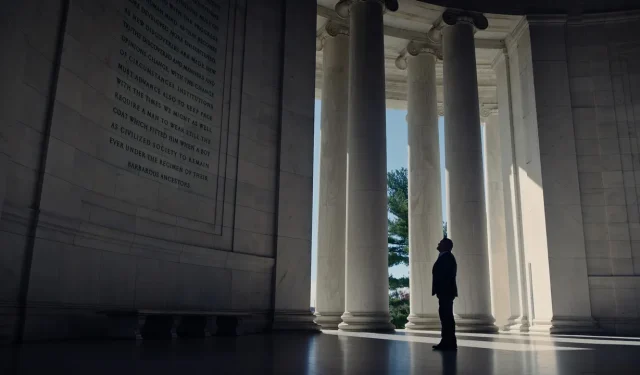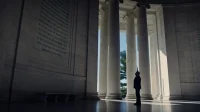The Age of Disclosure: A Critical Examination
In the realm of documentaries, the notion of “accuracy” is rooted in the presentation of data and testimonies designed to persuade and satisfy scrutiny. Conversely, “legitimacy” encompasses the aesthetic of that presentation—essentially how truthful it appears.
Legitimacy Over New Insights
Dan Farah’s latest documentary, The Age of Disclosure, leans heavily on the concept of legitimacy. Surprisingly, the film does not provide groundbreaking revelations. Instead, it brings together 34 experts from military, governmental, and intelligence backgrounds to articulate a theory about a deep-state conspiracy that has purportedly concealed interactions with non-human intelligent life and extraterrestrial technology for the past 80 years. Many of these individuals have previously testified before Congress, reaffirming their personal convictions in a manner consistent with prior docuseries.
The Documentary’s Presentation Style
What differentiates The Age of Disclosure from other shows like *Unsolved Mysteries* or *Ancient Aliens* may not be its accuracy but rather its appearance of credibility. The film, which spans a lengthy 109 minutes, immerses viewers in a dialogue conveyed with unwavering conviction. Interview subjects present their declarations as established truths, evoking a particular persuasion that eschews the need for corroboration or evidence.
A Rhetorical Approach that Frustrates
As the documentary unfolds, particularly during its first hour, viewers may find Farah’s rhetorical strategies increasingly grating. This style could easily be dismissed by those who might suggest that skepticism itself is indicative of complicity in the alleged conspiracy—a classic dilemma faced when addressing controversial topics. Critics, after all, may risk appearing dismissive if they challenge narratives presented by figures poised as authorities.
The Shift in Terminology on UFOs
Recent years have seen a notable shift in how those in power discuss phenomena once deemed mere “UFOs,” now referred to as “Unidentified Anomalous Phenomena” (UAP). This change is largely an attempt to shed the stigma associated with UFOs and embrace a more scientific narrative.
Guided by Key Figures
The documentary features key insights from Lue Elizondo, who worked with the Advanced Aerospace Threat Identification Program (AATIP), and Jay Stratton, the director of the UAP Task Force. They guide the audience through the acknowledgment of UAPs and recent initiatives aimed at substantiating investigations into these unexplained occurrences. The film showcases not only the well-known advocates for disclosure but also those individuals who are believed to work behind the scenes to undermine these investigations.
Voices of Authority and Perception of Legitimacy
The film features a variety of sources, including military personnel, scientists associated with the UAP Task Force, and cautious politicians like Secretary of State Marco Rubio and Senators Kirsten Gillibrand and Mike Rounds. Their proximity to such high-profile figures is designed to lend credibility to the claims made in the film. Yet, one might argue that “legitimacy” is somewhat self-serving, as the film incorporates mainstream media clips that bolster its assertions.
The Aesthetic of Authority
Throughout the documentary, interviewees are filmed in official settings, enhancing the perception of legitimacy and credibility. The visual choice to film in well-appointed rooms lends an air of authority absent from more casual or conspiratorial backdrops. Furthermore, Blair Mowat’s somber score consistently complements the proceedings, instilling a sense of seriousness, even during mundane stock footage.
Challenges of Debunking and Speculation
One major critique of The Age of Disclosure is the absence of counterarguments. With claims made that lack empirical evidence, debunking those assertions becomes challenging. When anecdotal evidence arises, those individuals often reference undisclosed details that cannot be publicly validated, leaving skeptics at a loss for rebuttal. As speculation grows, when scientists discuss UAPs bending physical laws, the initial intrigue fades, revealing the documentary as a heavily stylized production lacking substantial depth.
Exploring the Concept of Disclosure
Farah’s film could have benefitted from a deeper exploration of what “disclosure” might entail—considerations surrounding its societal, economic, and geopolitical ramifications are notably absent. What true impact would this revelation have, and how would it reshape our understanding of reality? Instead, the focus remains on grandiose phrases like “the greatest paradigm shift in human history,” appealing to viewers eager for sensationalism.
In conclusion, while The Age of Disclosure may resonate with audiences captivated by its authoritative façade, a more discerning viewer might recognize it as a polished documentary that ultimately falls short in offering new insights or critical analysis.


